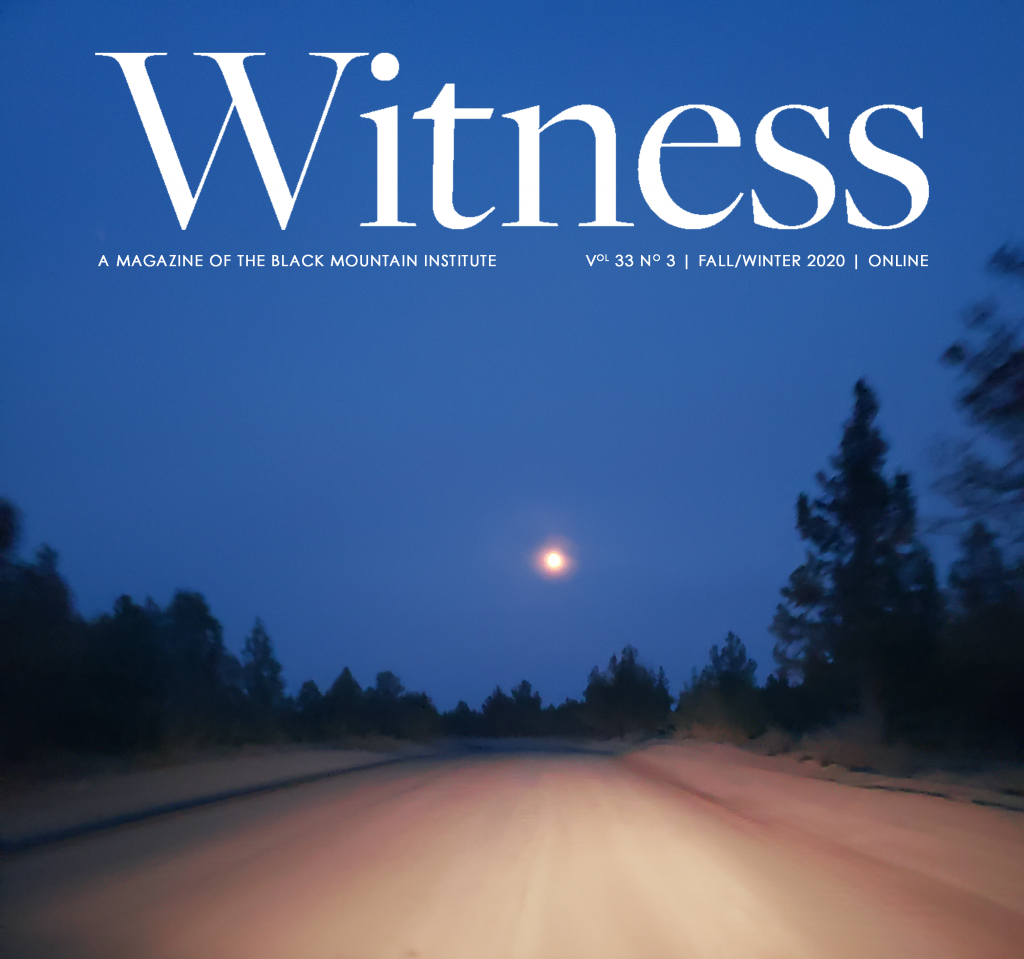-
Nevis, West Indies
He is Amaziah Bayle, groundskeeper
at the Halcyon Inn, once
a sugar plantation where his great-great-
grandfather was a cane slave.
He’s raking leaves and twigs below
fountain trees, those shy bearers he loves.
Petals, maroon and trowel shaped,
encircle buds that curve inward like
fingers touched together—swollen,
they’ll spray when blossoms open
or kids squeeze them as water pistols.
Pruning on a ladder this morning
he found the knuckle-sized nest of
a hummingbird, an orange-eyed
trembler, newly lined with spiderwebs
and waiting for its clutch,
so he won’t go back there.
Hearing sweet tree, sweet tree in the call
of a Carib grackle, he whistles in return.
His grandson has come at recess to gather
what an overnight squall brought down,
buds for a gunfight. “These bullfinches
chasing one another, each wants to be
Top Gun,” he says, then stays to help
set up tables and chairs for high tea
beside Halcyon’s infinity pool.
Sipping from fine china
and looking out to sea, guests
marvel how the far end of the pool
at cliff’s edge lies along the horizon,
where clouds like undiscovered lands appear.
What are you studying in 7th grade?
Today’s the conquistadors, the boy
answers. Hernando Cortés and what he did
to the aviaries of Montezuma.
What did he do?
Cortés himself lit the fuses
to kegs of gunpowder in wicker cages
—a soldier wrote this down—
tall as a mainmast. They held gardens
and every kind of songbird in Mexico.
Why did he do that?
“Faith and gold.” He tells his grandfather
to imagine tremblers, grackles, finches
in trees like these vanishing with
the sound of a ten-foot wave breaking.
How could such a thing be?
“Teacher said that’s how Cortés
explained himself to strangers.”
Hearing sweet tree, sweet tree,
Amaziah Bayle looks up into the leaves.
“Did the Emperor of the Aztecs have
a groundskeeper like you?” the boy asks,
then waves to classmates calling his name.







